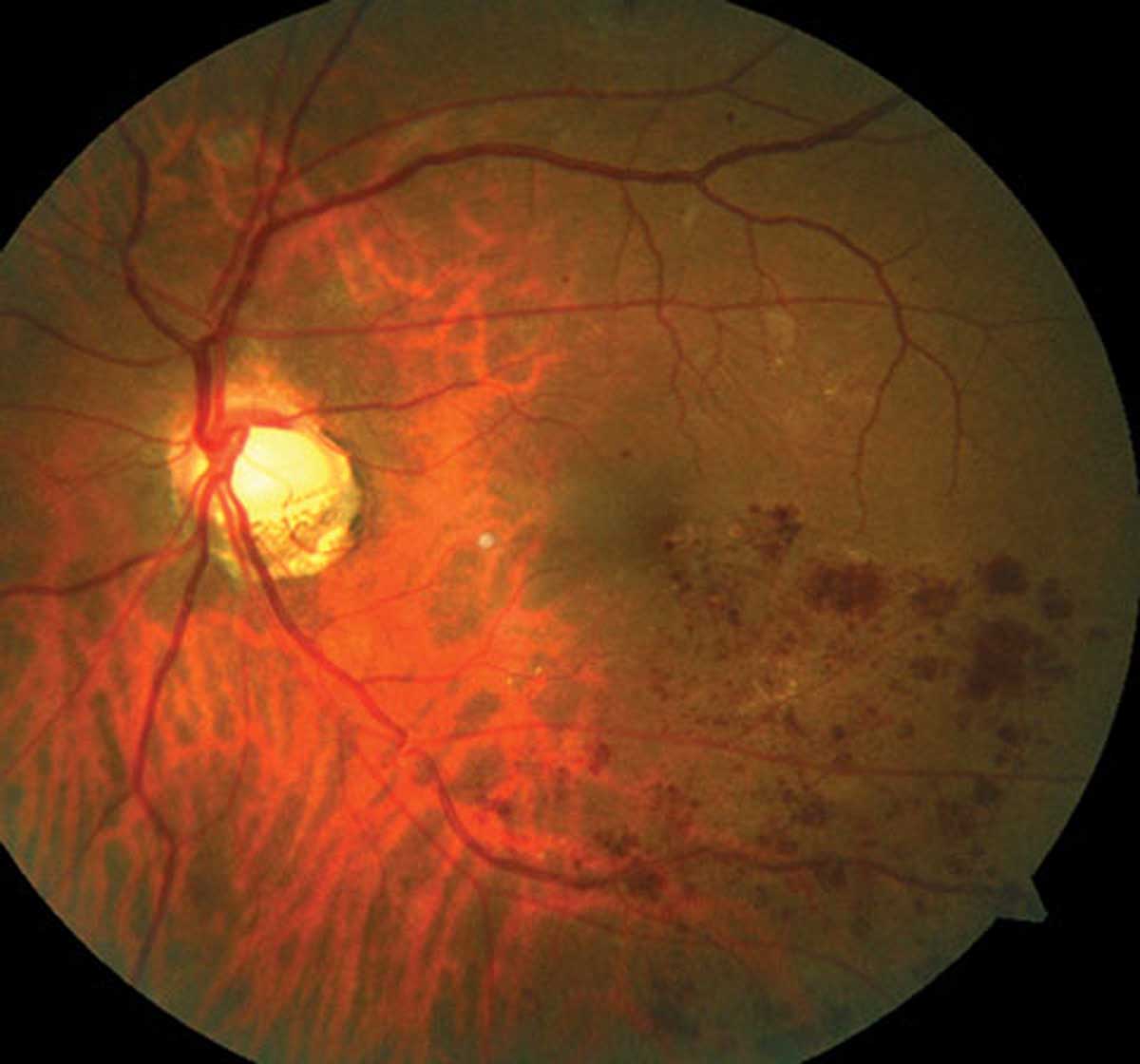 |
Anti-VEGF was shown to be an effective therapy for patients with HRVO. Click image to enlarge. |
In an effort to differentiate the effects of anti-VEGF treatment on hemi (HRVO), branch (BRVO) and central (CRVO) retinal vein occlusions, researchers recently found that HRVO patients experience the greatest mean change in VA, with 12-month acuity and central subfield thickness comparable to BRVO despite having baseline values similar to CRVO. The team noted that inclusion of HRVO in clinical trials with branch and central retinal vein cohorts would be expected to proportionally inflate and skew visual and anatomical outcomes.
The database observational study evaluated 79 HRVO eyes, 590 BRVO eyes and 344 CRVO eyes that initiated therapy over 10 years. The primary outcome was mean change in logMAR VA at 12 months. Secondary outcomes included mean change in CST, injections and visits over the study period.
At baseline, the mean visual acuity in HRVO (53.8) was similar to CRVO (51.9) but lower than BRVO (59.4). With treatment, HRVO eyes saw improvements that match BRVO eyes. The mean change in VA was greater in HRVO (+16.4) than either BRVO (+11.4) or CRVO (+8.5).
The mean change in central subfield thickness in HRVO (-231μm) was similar to CRVO (-259μm) but greater than BRVO (-151μm). The groups had similar median treatment burdens of eight injections and nine visits.
“Treatment-naïve HRVO eyes receiving VEGF inhibitors in routine clinical practice had very good visual and anatomic outcomes,” the study authors wrote in their paper. “We provide evidence specific to HRVO which suggests that it should not be considered equivalent to BRVO or CRVO at presentation or when comparing responses to treatment.”
Hunt AR, Nguyen V, Arnold JJ, et al. Hemiretinal vein occlusion 12-month outcomes are unique with vascular endothelial growth factor inhibitors: data from the Fight Retinal Blindness! Registry. Br J Ophthalmol. January 25, 2022. [Epub ahead of print]. |

